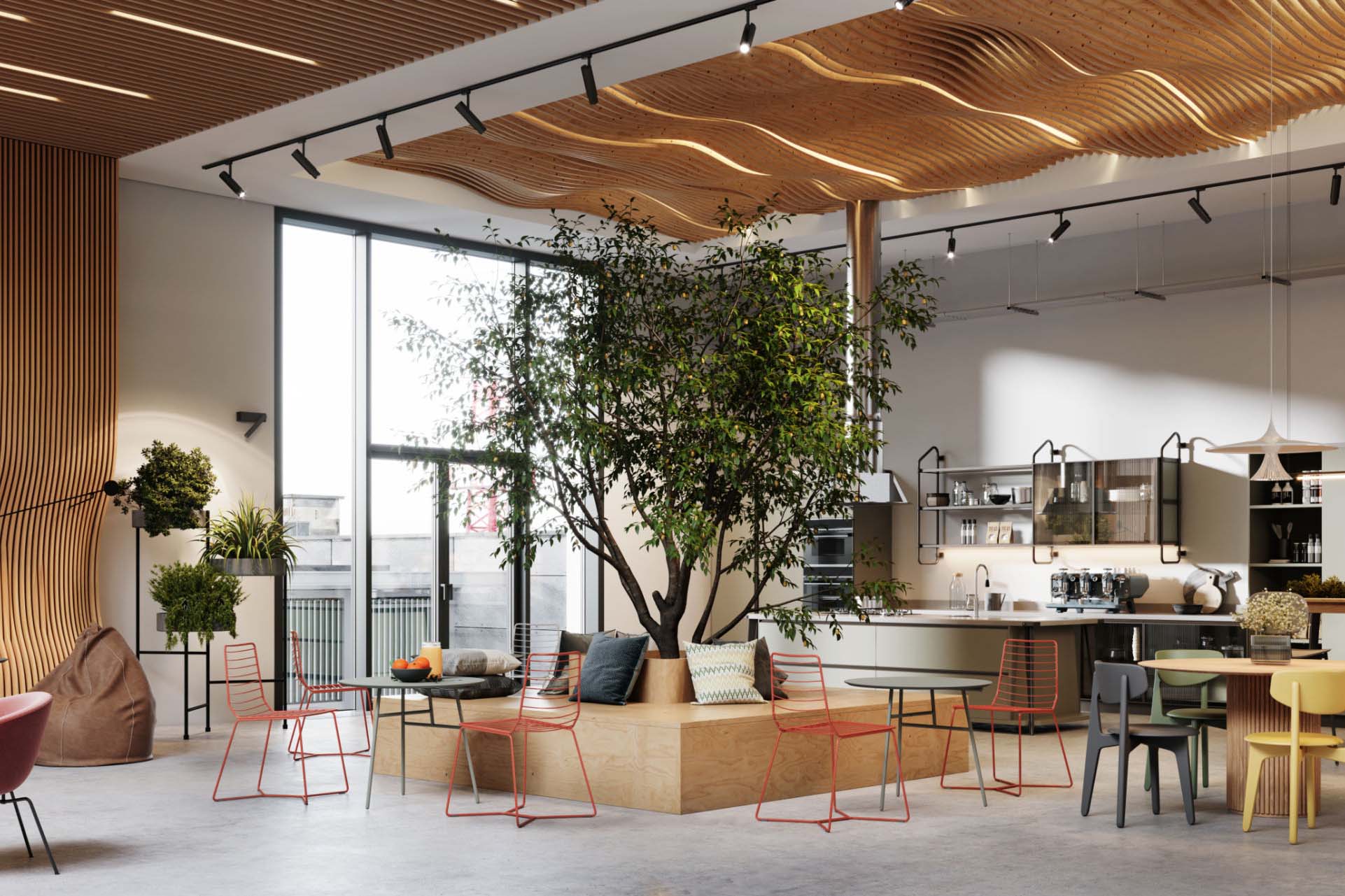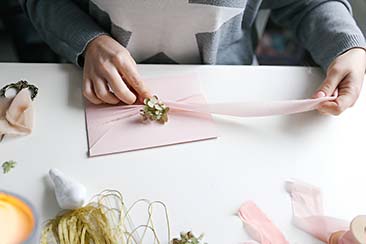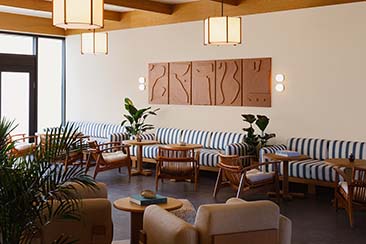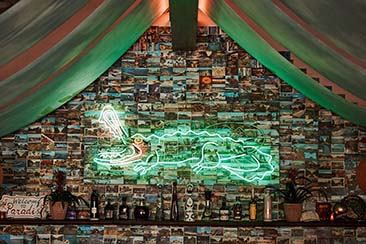Whether you’re wondering what artificial trees are actually made of, or have questions about maintaining them, we’ve got your back. Read on to have your biggest questions about artificial trees answered.
1. What are artificial (silk) trees made of?
Despite their name, today’s artificial (or silk) trees are no longer made of silk. Most high-quality artificial trees are made of synthetic materials like polyester, nylon, rubber, PVC, and other plastics.
This combination of materials and technology gives you trees that not only look vividly real but also feel natural to the touch.
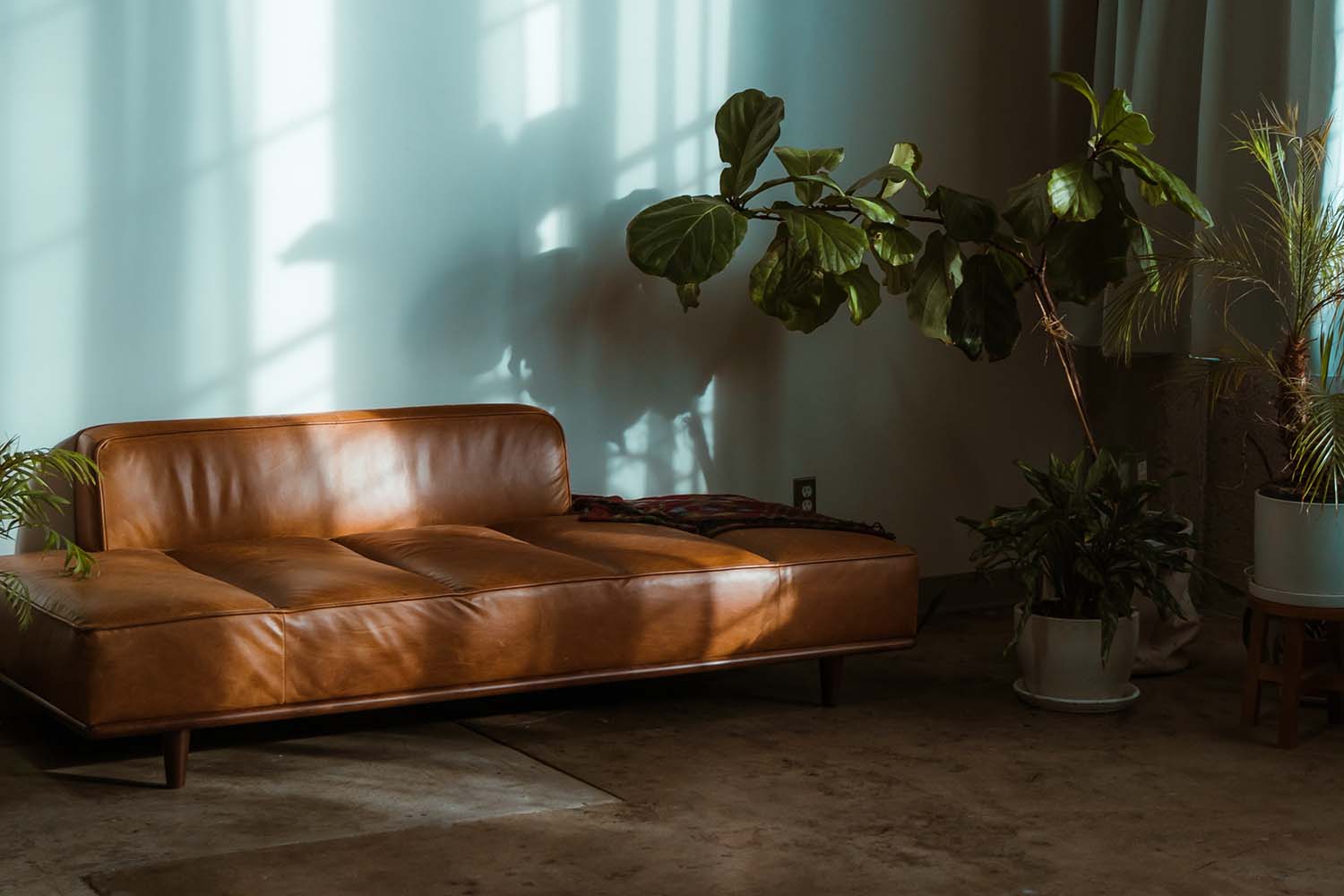
Photo, Alen Kajtezovic.
2. How to identify the best-quality, most realistic-looking artificial trees?
This is the most common question that plagues those of us taking the first tentative steps in the world of artificial plants and biophilic design.
Well, we’ve got a simple two-step process to help you out.
Step 1: Look at the details.
It’s here that the real difference is made. Real trees aren’t perfect. So the first marker to watch out for is trees that look too symmetric, or have unnaturally identical leaves.
Look for trees that mimic the small nuances and ‘flaws’ of their real-life counterparts. Seemingly minor details like unevenly shaded leaves, grainy bark, or gnarly, twisted branches make all the difference.
Step 2: Study the materials.
High-quality artificial trees are an investment not made lightly. So when it comes to choosing them, it’s not only about how good they look. But also about how long they’re going to last you.
So, study the materials being used. High-quality silk plants are made of a mixture of polyester, polymers, and plastics. Most top-end manufacturers and sellers worth their name will have their own custom manufacturing process for the branches, leaves, and flowers.
Pro tip: A great way to ensure quality is to stick to manufacturers that are willing to offer a long-term guarantee of their materials and products. (An obvious pointer, but one that most first-time artificial tree buyers, like you, don’t know to look for.)
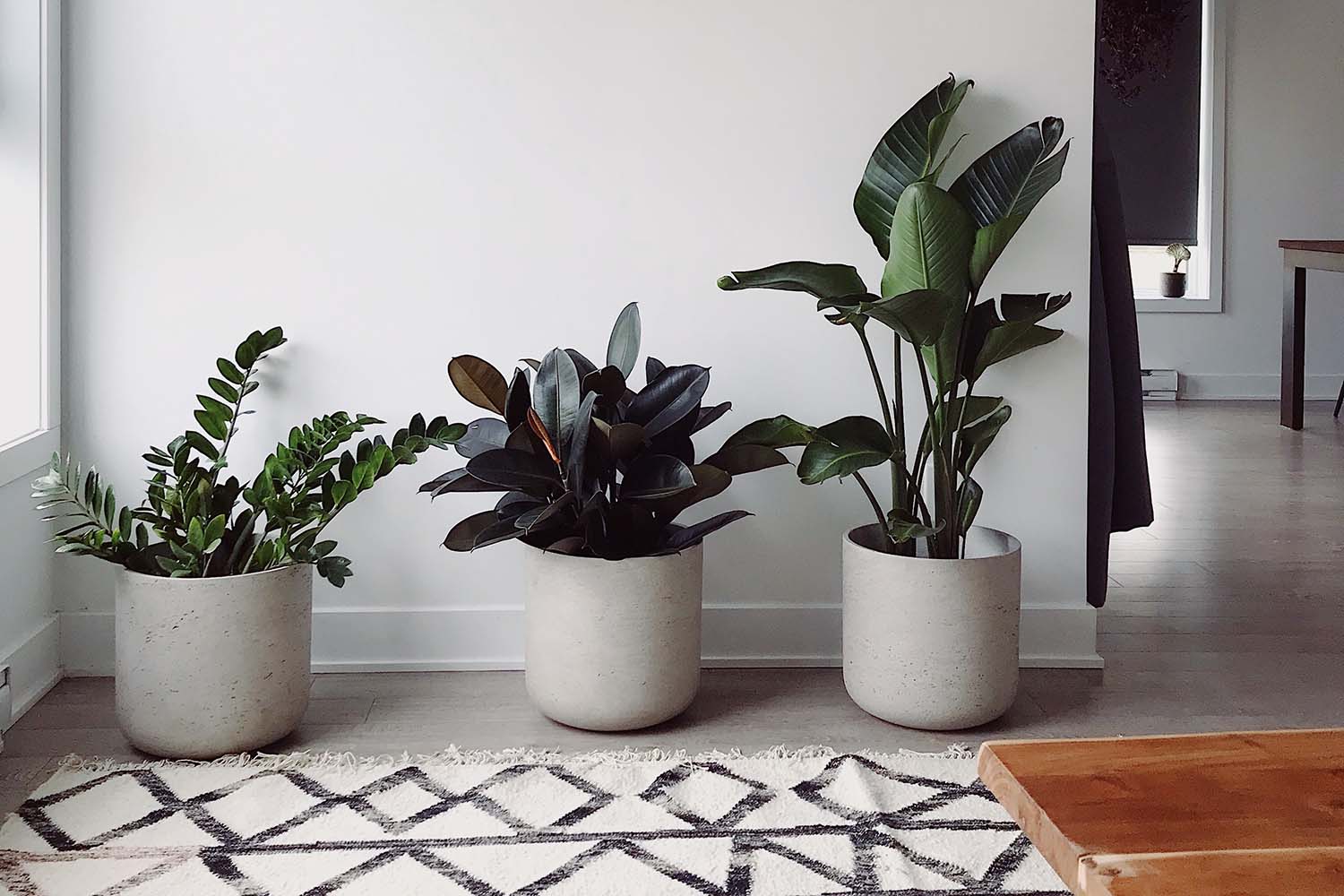
Photo, Spacejoy.
3. How to choose the right artificial tree for a space?
Artificial trees are a fabulous way for one to spruce up any space instantly. But choosing the wrong type of tree can ruin the entire aesthetic and ambience of the space just as fast.
The three big factors to keep in mind to select the right type of artificial tree are:
Height: Small desk plants or potted plants aren’t impacted by the height of a room. But before buying a tree ensure it fits the room proportionately. Generally, the sweet spot for artificial trees is between 1/2 – 2/3rd of the room’s height.
Volume: Next consider how much space the artificial tree is going to take up in the room. This is not rocket science. The smaller the room, the simpler and more slender the tree. The bigger the space, the bushier, wider and heavier you can go with your selection.
Light and Ventilation: It’s easy to get carried away and ignore real-life considerations while selecting artificial trees. But a lush, flowery tropical plant in a dingy room with no windows is going to scream “fake plant”.
You don’t need warm Caribbean lighting in all your rooms, but ensure the type of tree you choose looks like it could survive in the room’s lighting. (This could be either natural or artificial lighting.)
Design Fit: But finally, it all comes down to how you want to design your space and what features you want to highlight. There’s no hard and fast rule for this, but here are some design suggestions to guide you.
— To accent a wall / tall vertical surfaces: Green walls
— For outdoor spaces/rooftops / communal gathering areas: Artificial boxwood hedges
— For desks and workspaces: Potted plants like succulents, pothos, dracaenas, mini ferns, etc.
— To make a statement: Bamboo, birches, ficus, olive, and palm trees
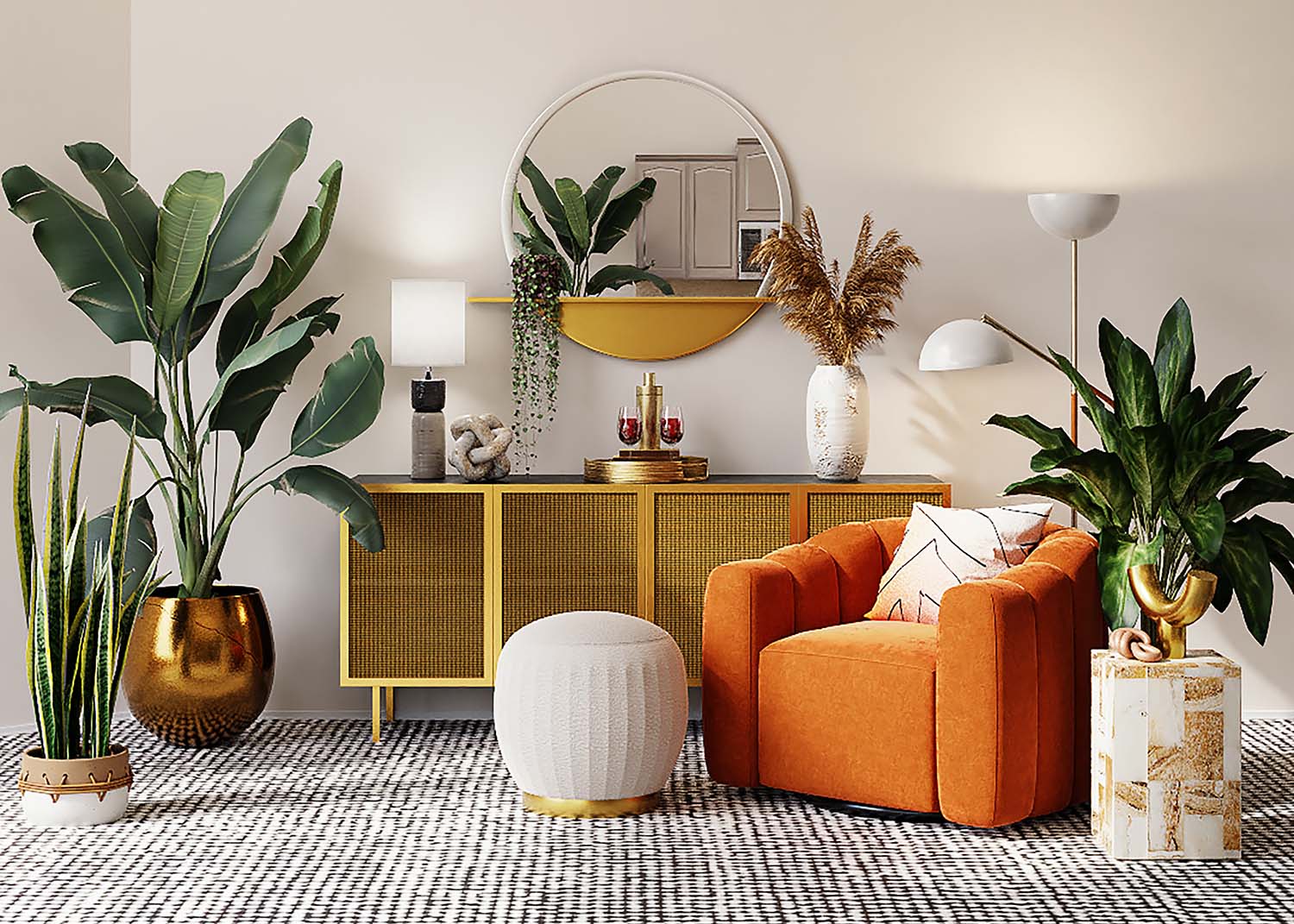
Photo, Vadim Kaipov.
4. Do artificial trees need maintenance? How to maintain your artificial trees?
Yes and no. While artificial trees don’t need regular watering, fertilising, and pruning like regular trees, they still need some cleaning.
Periodically cleaning your artificial trees with a feather duster or microfibre cloth will remove any extra dirt and dust and keep them looking fresh.
If you happen to skip cleaning them for a while, then the dirt settles and becomes harder to remove. In such cases, spray and wipe down the trees with a mixture of warm water and mild soap. Then follow up with a round of non-aerosol silk cleaner, recommended by the manufacturer.
5. Can you use artificial trees outdoors? Do they get damaged?
Yes, you can. But, make sure the plant you put outside is weatherproof.
Most manufacturers have a range of outdoor artificial trees which are made of weatherproof materials to ensure its colours stay vibrant and fresh even after years in the sun.
6. Are fake trees safe indoors? Are artificial trees a fire hazard?
Usually, yes. But it depends on the material of the artificial plant. Some manufacturers sell silk trees with non-fire-retardant foliage, which is a serious fire risk.
So ensure you protect your guests, property, and yourself with artificial trees that have guaranteed fire-resistant foliage.
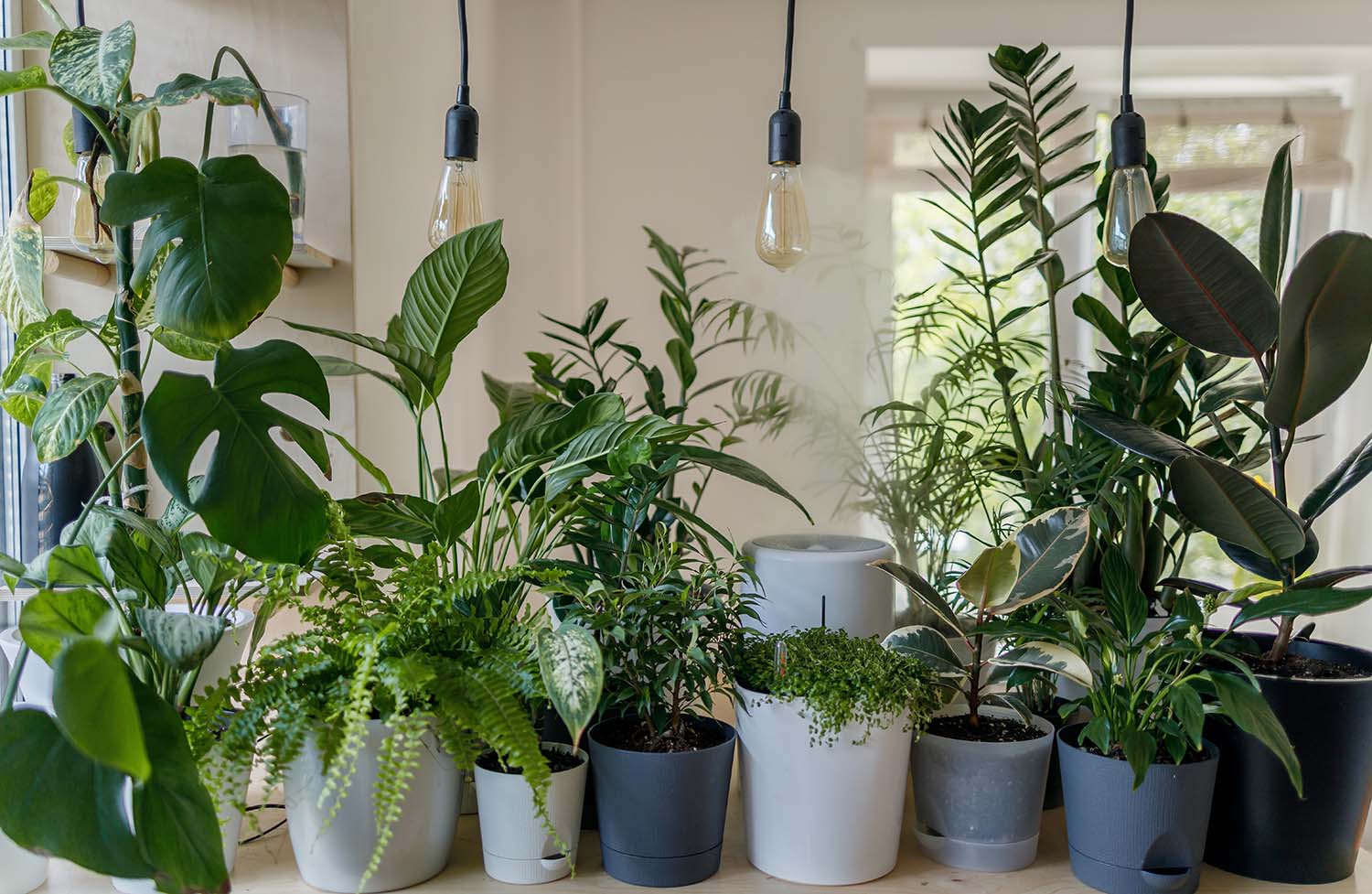
Photo, WH4CAPTION.
7. What size planter/pot to use for your artificial trees?
Finally, we come down to actually placing them in space.
The planter for an artificial tree doesn’t just add to the aesthetic of the space but also helps make the tree look more real.
While there are no hard and fast rules, here’s a basic planter size guide for artificial trees.
Tree height to planter diameter proportions:
For a 3′-4′ tall tree, use a 12″ planter
A 4′-5′ tall tree will need a 13″-14″ planter
For a 6′-7′ tall tree, use a 15″-16″ planter
An 8′-10′ tall tree requires a 16″-20″ planter
For a 10′-12′ tall tree, use a 24″ planter
And in all cases, use your best judgment.
Now that you’re all equipped, you can take your first steps in the world of artificial trees with confidence.
Sources
https://www.nearlynatural.com/pages/fake-trees-faqs
https://treescapes.com/frequently-asked-questions/
https://pacificsilkscapes.com/faqs-about-artificial-plants
https://www.commercialsilk.com/artificial-green-walls-topiaries/outdoor-green-walls
https://www.commercialsilk.com/faq
https://www.artificialplantsandtrees.com/articles/clean-your-silk-plants-and-trees-the-right-way/
